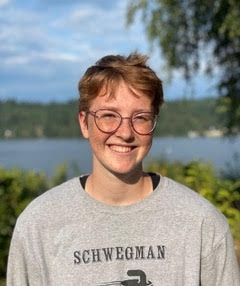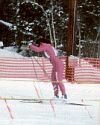Olympic Report: Team Sprint and Freestyle Distance Recap

Classic Team Sprint
In Wednesday’s team sprint event, pairs of athletes teamed up to represent their nation, skiing alternating laps for a total of six laps of the sprint-length course. The top four teams from each of two semifinals advanced to the final, as did two lucky losers with the next two fastest times. Following the historic American women’s victory in this event in 2018, everyone was looking to the U.S. team to see how they stacked up four years later. Because the event was classic style this time around, the American duo of Jessie Diggins and Rosie Brennan knew it would be challenging, but after placing third and fourth respectively in the individual sprint, the two had reason to be confident. In the first semifinal, the United States and Germany controlled much of the race, and by the third leg the two teams along with Austria had created considerable separation from the rest of the field. Although the athletes tested each other, often going hard on the hills, by the end the top three knew their spots were secured and didn’t waste energy going for first place. Switzerland came in next to take the fourth qualifying spot. The second semifinal was stacked with more of the favorites to do well, featuring Sweden, Norway, Finland, and the Russian Olympic Committee (ROC). Yulia Stupak and Natalia Nepryaeva controlled most of the race for the ROC, leading Finland, Sweden, and Norway to finish as a front pack. The quick pace of this semifinal allowed Poland and France to advance to the final as lucky losers.
At the start of the final round, Brennan was nearly dead last, but by the first exchange she’d worked her way up to the front of the group. This set Diggins up for a strong first leg at the front of the pack, where she stayed for nearly the entire lap alongside Krista Parmakoski of Finland. After the second exchange, Finland continued to sit at the front, with the ROC and German teams close behind. Tiril Udnes Weng of Norway was also skiing well until she broke a pole on the climb after misplacing it in front of another skier, leaving Norway out of contention for the time being. After another strong leg from Brennan, Diggins made her way to the front of the group for the second time, leading for the first half of the lap. On the final climb, however, Victoria Carl of Germany and Jonna Sundling of Sweden pushed the pace, and Diggins lost a bit of ground. Leaving the exchange zone for the last time, Brennan was able to make up the lost time after a decisive effort on the first climb, forming a group of five at the head of the race. A hard effort from Kerttu Niskanen of Finland on the final climb splintered the group, however; only the German Katharina Hennig was able to match her. After the final exchange, Finland, Germany, Sweden, the ROC, and the U.S. were all relatively close together, but Diggins couldn’t quite match the other four on the climbs. By the final stretch, Parmakoski had lost time as well, and it was a three-way sprint between Sundling, who led into the stadium, Stupak, and Carl. With an incredible sprint, Carl was able to claim the gold medal for Germany just ahead of Sundling who took home the silver for Sweden. Nepryaeva finished third, earning the bronze medal for the ROC team. The U.S. team finished fifth just behind Finland in fourth.
In the first semifinal of the men’s race, the Finnish men employed a similar strategy to the women, staying at the front and controlling the race as much as possible. Norway and Canada also stayed close to the head of the group, but it wasn’t until the last exchange that any significant separation in the pack happened. Johannes Klaebo of Norway, Joni Maki of Finland, Richard Jouve of France, and Graham Ritchie of Canada finished comfortably in the first four spots, conserving energy in the slower of the two semifinals. The second semifinal was a bit more chaotic, with American Ben Ogden breaking a pole early on in the race and ROC athlete Alexander Terentev taking a fall midway through the race. Terentev’s teammate Alexander Bolshunov soon worked his way back to the front, however, and heading into the final lap the large lead group began to split up. Janosch Brugger of Germany lost a ski, and with it any hopes of advancing, while Italian Federico Pellegrino of Italy pushed the pace at the front. Italy, Sweden, Switzerland, and Austria took the four automatic qualifying spots, while the ROC and U.S. teams advanced as lucky losers.
In the first two laps of the final round, the field maintained a conservative pace with the ROC, Sweden, and Norway primarily at the front. On the third leg, Bolshunov pushed the pace on the climbs, testing to see who could match him and creating some separation in the group. Erik Valnes of Norway had no trouble keeping up, but by the fourth leg the top eight were largely reunited. At the end of the fifth lap, Iivo Niskanen of Finland put in a big effort on the last hill, with Valnes and Bolshunov following him and distancing themselves from the rest of the field. By the final lap, the medalling teams seemed decided; the question now was who got which one. Maki led for most of the leg, going hard but never dropping Klaebo and Terentev. On the final climb, Klaebo used his famous running technique to pull away from the others, clinching the victory for Norway. Behind him, Terentev fought it out for second place, but Maki had more left in the tank. Finland took silver and the ROC got the bronze. The American men finished in ninth place.
Freestyle Distance
The final cross country races of the Beijing Olympics took place in brutally windy and cold conditions. After being delayed due to the weather and shortened from 50 to 30 kilometers, the men’s race finally started on Saturday. As the last cross country race of the Olympics for the men, the pool of race-ready athletes was dwindling—Iivo Niskanen opted not to race (although he is the defending champion in the 50 kilometer race, as a classic specialist he was not a favorite to win), and Klaebo dropped out midway through the race due to stomach issues. New to this year’s Olympic scene however was Simen Hegstad Krueger of Norway, competing in his first race in Beijing after recovering from COVID. With less distance to work with, the athletes played less games at the start of the race than normal, but the pace for the first ten minutes was still fairly conservative. Maurice Magnificat of France was the first to test the field, putting in an effort after a few kilometers and remaining at the front of the pack for much of the first half of the race. By the halfway mark, the lead pack was down to about fifteen, led mainly by Bolshunov. At this point, some athletes opted to change skis in the stadium, including Krueger and his teammate Hans Christer Holund. Krueger was able to catch the group fairly quickly, but after breaking a pole Holund struggled a bit more. With around seven kilometers to go, the lead group was down to ten, including the only American in the race, Scott Patterson. Sporadic efforts from Bolshunov and Krueger in the last few kilometers led to some yoyoing in the group, but in the final few minutes it was Bolshunov, Krueger, Ivan Yakimushkin and Artem Maltsev of the ROC, and Sjur Roethe of Norway at the front. Bolshunov and Krueger looked like they might have the top two spots secured for a bit, but strategic skiing from Yakimushkin left him with some extra energy at the end. Bolshunov skied away to earn his third gold medal of the Games, but it was Yakimushkin who finished second, with Krueger placing third. Patterson finished eighth, a historic result in men’s distance skiing for the United States.
Conditions hardly improved for the women’s race, which took place in similarly cold and gruelingly windy weather. The athletes wasted no time with an easy pace, and by 7.5 kilometers a lead group of Therese Johaug of Norway, Delphine Claudel of France, Ebba Andersson of Sweden, and Diggins had already formed. By just 10 kilometers, the group was splintering, with Claudel falling off the back and Johaug pulling away in front. Meanwhile, a determined chase group was forming behind them, led primarily by Brennan. The top three skiers were all in no-man’s-land, battling the wind on their own while doing their best to hold off their competitors. Johaug’s lead increased with every kilometer, predictably, while Diggins held fast to second place. Behind them, Andersson was giving everything she had to stay in bronze medal position, but in the last few kilometers things went awry. Niskanen was furiously chasing, bringing Brennan, Sundling, Claudel, and Tatiana Sorina of the ROC with her. At the front of the race, Johaug crossed the line in first, earning her third gold medal of the Games. +1:43 behind her was Diggins, finishing exhausted and elated in second place despite a case of food poisoning the day before. Her silver is the first ever Olympic medal from an American woman in a distance cross country event. In the fight for the bronze, Andersson looked like she might hold on to third place, but in the last half kilometer she was swallowed by the chase group. In a close finish, Niskanen outsprinted the others to place third, while Brennan was sixth and Andersson eighth. Not far behind, the other Americans Sophia Laukli and Novie McCabe were performing well, with Laukli placing 15th in her Olympic debut and McCabe finishing 18th.
Period 4 Preview
After a short break, cross country races will soon resume in Lahti, Finland next weekend with a freestyle sprint and a classic 10/15km race. The season is far from over for the World Cup athletes; the Lahti races are followed by events in Drammen, Oslo, Falun, and Tyumen, taking place throughout February and March. Brennan and Diggins will fly to Lahti to continue competing, while many of their teammates return to the United States for collegiate races. Although some athletes will opt to take time off after the Olympics, with the sprint, distance, and overall World Cup rankings at stake, many will be looking to defend and improve their positions.
 |
About the author... Erika Peterson is a senior at South High School in Minneapolis. She skis for Loppet Nordic Racing as well as her high school team. When she’s not out on the trails, you can find her listening to Lorde and creating oatmeal recipes. |

